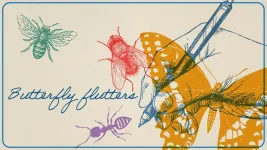(Press-News.org)
LA JOLLA, CA—Xylazine is an FDA-approved sedative and pain reliever for use in animals, but it has severe adverse effects when used in humans. It is now illicitly being added to opioids, like fentanyl and heroin, as well as cocaine—leading to a sharp rise in overdose deaths.
Now, Scripps Research chemical biologists have developed a vaccine to block the effects of xylazine’s toxicity. The vaccine works by training the immune system to attack the drug, which is described in a new paper published in Chemical Communications on April 1, 2024.
“We demonstrated that a vaccine can reverse the symptoms of a xylazine overdose in rodents,” says study senior author Kim D. Janda, PhD, the Ely R. Callaway, Jr. Professor of Chemistry at Scripps Research. “There is currently no remedy for xylazine poisoning other than supportive care, thus, we believe our research efforts and the data we have provided will pave the way for an effective treatment in humans.”
The rapid increase in lethal drug overdoses attributed to xylazine combined with fentanyl prompted the White House Office of National Drug Control Policy to declare this combination an emerging threat to the United States. Xylazine intoxication presents similarly to opioid overdose, causing respiratory and central nervous system depression, and it can heighten the effects of opioids. However, naloxone—typically administered to reverse the effects of opioids—does not tackle the impact of xylazine, highlighting the need for effective measures to treat acute toxicity caused by xylazine.
Researchers suspect xylazine works by reducing blood flow to the brain, among other areas of the body. The drug also causes non-healing skin lesions and wounds, often located on the forearms and lower legs, that can require amputation in some cases—giving it the nickname “zombie drug.”
Although no treatment currently exists, targeted vaccines may offer a solution. Vaccines nudge the immune system to create antibodies to fend off invaders. Antibodies can target viruses, bacteria and toxins. However, sometimes molecules are too small to initiate an immune response, as is the case with xylazine. So, to circumvent this problem, the researchers created a vaccine using a design principle that Janda pioneered, which relies on pairing the drug molecule (called a hapten) with a larger carrier molecule (a protein) and an adjuvant.
In this study, the scientists combined a xylazine hapten with multiple different protein types, to see which combination would create a robust immune response against xylazine. The team tested three vaccine formulations (termed TT, KLH and CRM197, based on the protein involved) to see which vaccine cocktail could help rodents after being challenged with xylazine. One of the three vaccines (TT) significantly increased movement in mice given xylazine after 10 minutes, while two of the three vaccines (TT and KLH) led to an improvement in breathing.
The scientists also examined how these vaccines would limit xylazine blood brain barrier, (BBB) permeation, a filtering mechanism that scrutinizes drug penetration. When xylazine was injected, it immediately crossed into the brain to bind with receptors. Antibodies typically cannot navigate the BBB; however, two of the three vaccines (TT and KLH) showed a strong ability to stop xylazine from reaching its receptors in the brain, limiting its detrimental effects.
A provisional patent has been filed on the research. In the future, his team will build off this work to create a bifunctional antibody that will reverse both fentanyl and xylazine’s toxicity simultaneously, something that naloxone cannot do.
“A monoclonal antibody treatment could be given in tandem with the vaccine to provide both immediate and long-term protection from both opioid substance use disorders as well as opioid-xylazine overdoses,” says Janda. “This strategy could make a significant impact on the opioid epidemic.”
“Evaluation of a Hapten Conjugate Vaccine Against the ‘Zombie Drug’ Xylazine” was co-authored by Mingliang Lin, Lisa M. Eubanks, Bin Zhou, and Kim D. Janda, all of Scripps Research.
Funding for the study was provided by the Shadek family and Pearson Foundation.
About Scripps Research
Scripps Research is an independent, nonprofit biomedical institute ranked one of the most influential in the world for its impact on innovation by Nature Index. We are advancing human health through profound discoveries that address pressing medical concerns around the globe. Our drug discovery and development division, Calibr, works hand-in-hand with scientists across disciplines to bring new medicines to patients as quickly and efficiently as possible, while teams at Scripps Research Translational Institute harness genomics, digital medicine and cutting-edge informatics to understand individual health and render more effective healthcare. Scripps Research also trains the next generation of leading scientists at our Skaggs Graduate School, consistently named among the top 10 US programs for chemistry and biological sciences. Learn more at www.scripps.edu.
END
UNIVERSITY PARK, Pa. — The sunflower family tree revealed that flower symmetry evolved multiple times independently, a process called convergent evolution, among the members of this large plant family, according to a new analysis. The research team, led by a Penn State biologist, resolved more of the finer branches of the family tree, providing insight into how the sunflower family — which includes asters, daisies and food crops like lettuce and artichoke — evolved.
A paper describing the analysis and findings, which researchers said may help identify useful traits to selectively breed plants with more desirable characteristics, appeared online in the journal ...
On March 27, 2024, Ann & Robert H. Lurie Children’s Hospital of Chicago treated its first patient with ELEVIDYS (delandistrogene moxeparvovec-rokl), the first gene therapy for Duchenne muscular dystrophy – a rare, genetic disease characterized by progressive muscle damage and weakness. Lurie Children’s is the first in Illinois to administer this treatment after ELEVIDYS received U.S. Food and Drug Administration (FDA) approval in June 2023.
Developed by Sarepta Therapeutics, ELEVIDYS is approved for the treatment of Duchenne muscular dystrophy (DMD) in ambulatory patients aged 4 through 5 years with ...
Butterflies, bees, ants and flies are the most widely referenced arthropods in a sample of almost 4,000 haiku - which commonly describe their color, flight and ecology
###
Article URL: https://journals.plos.org/plosone/article?id=10.1371/journal.pone.0298865
Article Title: Diversity and complexity of arthropod references in haiku
Author Countries: USA
Funding: The author(s) received no specific funding for this work. END ...
Might your personality affect how you move? Runners classified as Myers-Briggs "Sensing" types have a more grounded running style in experiments than those classified as "Intuition" types
###
Article URL: https://journals.plos.org/plosone/article?id=10.1371/journal.pone.0300108
Article Title: Mind to move: Differences in running biomechanics between sensing and intuition shod runners
Author Countries: France, Switzerland, Belgium
Funding: The author(s) received no specific funding for this work. END ...
The earliest dinosaurs had rapid growth rates, but so did many of the other animals living alongside them, according to a study published April 3, 2024 in the open-access journal PLOS ONE by Kristina Curry Rogers of Macalester College, Minnesota and colleagues.
Dinosaurs grew up fast, a feature that likely set them apart from many other animals in their Mesozoic (252 to 66 million years ago) ecosystems. Some researchers have proposed that these elevated growth rates were key to the global success of dinosaurs, but little is known about the growth strategies of the earliest dinosaurs. In this study, Rogers and colleagues performed histological analysis, examining patterns of bone ...
The hours you work earlier in life may be associated with worse health years later, according to a study published April 3, 2024 in the open-access journal PLOS ONE by Wen-Jui Han from New York University, US.
Studies have consistently shown that nonstandard work schedules—working outside the traditional nine-to-five workday—can negatively impact physical and mental health as well as social and family life. The current study uses a life-course approach to provide a longer-term perspective on how work schedule ...
A recent study led by researchers from the German Centre for Integrative Biodiversity Research (iDiv), the Martin Luther University Halle-Wittenberg (MLU) and the non-profit conservation organization Re:wild shows that the threat of mining to the great ape population in Africa has been greatly underestimated. Their results have been published in Science Advances.
The rising demand for critical minerals, such as copper, lithium, nickel, cobalt, and other rare earth elements required for the large-scale transition to cleaner energy is causing a surge of mining in Africa, where a large share of those mineral resources is still unexploited. ...
Tourism to Yellowstone National Park produces more than a billion kilos of CO2 emissions annually, with 90% arising through travel to and from the park, especially from visitors arriving by plane.
####
Article URL: https://journals.plos.org/climate/article?id=10.1371/journal.pclm.0000391
Article Title: Quantifying and evaluating strategies to decrease carbon dioxide emissions generated from tourism to Yellowstone National Park
Author Countries: United States
Funding: This work was supported by the Utah Agricultural Experiment Station (Project ...
During the pandemic, University of Rochester Medical Center (URMC) researchers, including those from the Intellectual and Developmental Disabilities Research Center (IDDRC), teamed up with the Mary Cariola Center to study ways to prevent COVID infection among children with intellectual and developmental disabilities (IDD), a particularly vulnerable population. Together, they found that good airflow and filtration in schools may help these children and their teachers avoid COVID infections.
The COVID pandemic was a particularly difficult balancing act for children with IDDs and their ...
In humans, the exact same mutation in a specific gene can produce widely different outcomes. It’s a bit like adding the same amount of salt to different recipes—the effect on the finished dish can be quite different, depending on the mix of other ingredients. Now, researchers at The Jackson Laboratory (JAX) have developed a powerful platform to study the reasons behind these varying mutation outcomes. The work, published today in Science Advances, not only provides new opportunities for uncovering targets for therapeutic interventions but also represents a significant step forward in addressing the critical need ...







